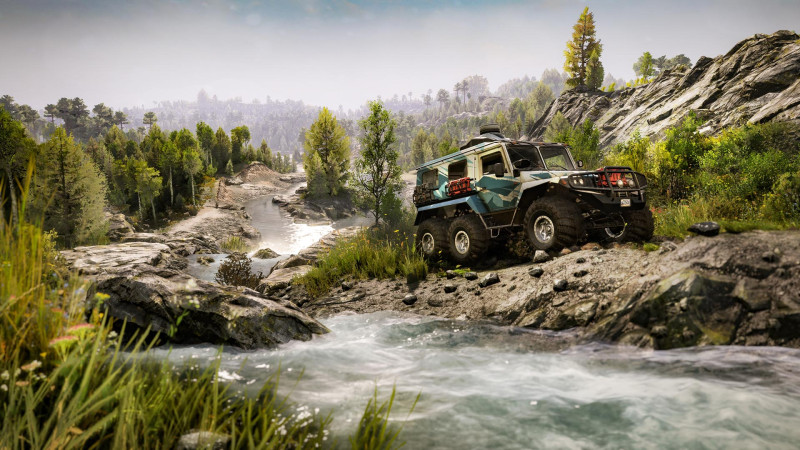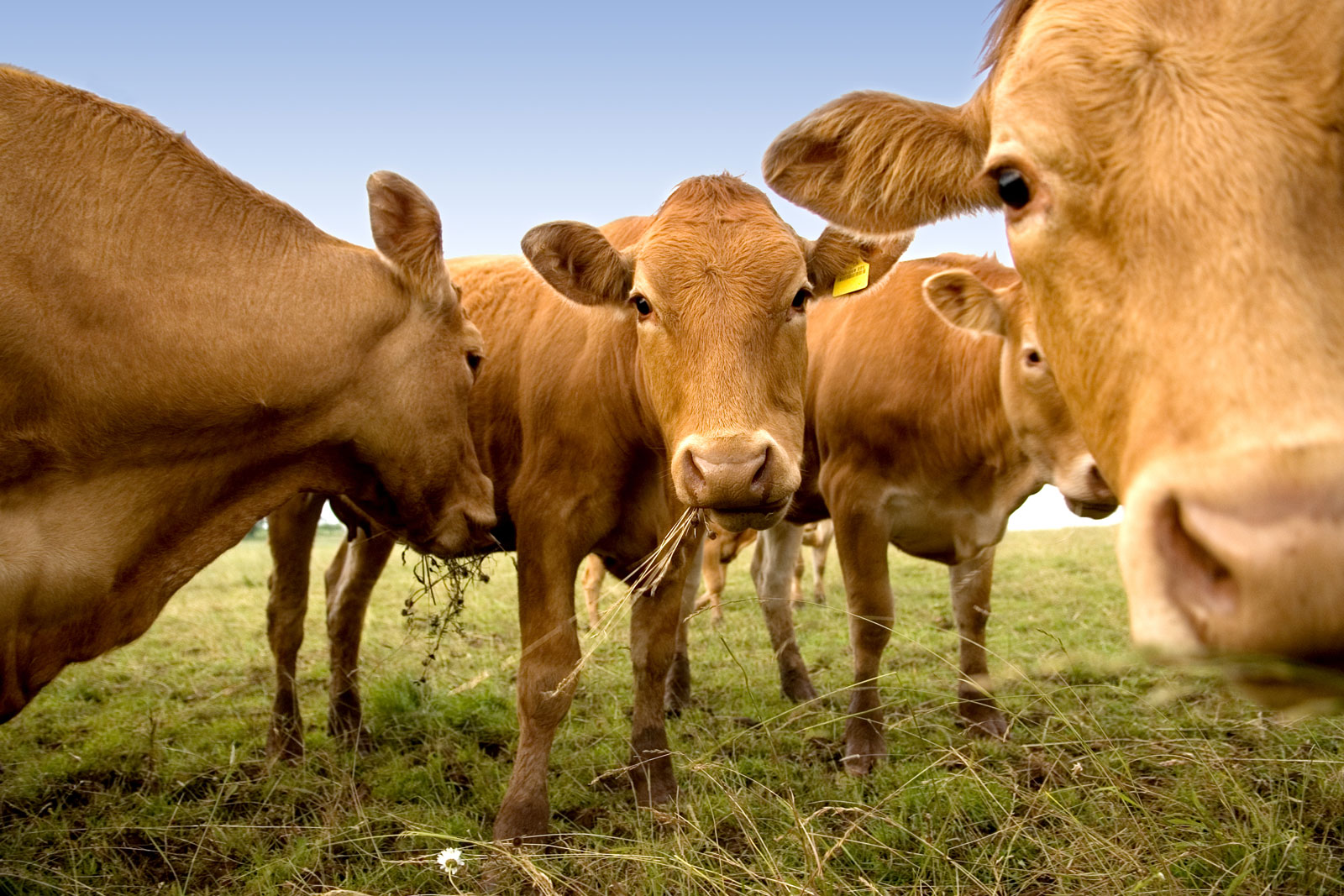When it comes to global climate change, livestock grazing can be either a blessing or a curse, according to a new study, which offers clues on how to tell the difference.
If managed properly, the study shows, grazing can actually increase the amount of carbon from the air that gets stored in the ground and sequestered for the long run. But if there is too much grazing, soil erosion can result, and the net effect is to cause more carbon losses, so that the land becomes a net carbon source, instead of a carbon sink. And the study found that the latter is far more common around the world today.
The new work, published today in the journal Nature Climate Change, provides ways to determine the tipping point between the two, for grazing lands in a given climate zone and soil type. It also provides an estimate of the total amount of carbon that has been lost over past decades due to livestock grazing, and how much could be removed from the atmosphere if grazing optimization management implemented. The study was carried out by Cesar Terrer, an assistant professor of civil and environmental engineering at MIT; Shuai Ren, a PhD student at the Chinese Academy of Sciences whose thesis is co-supervised by Terrer; and four others.
“This has been a matter of debate in the scientific literature for a long time,” Terrer says. “In general experiments, grazing decreases soil carbon stocks, but surprisingly, sometimes grazing increases soil carbon stocks, which is why it’s been puzzling.”
What happens, he explains, is that “grazing could stimulate vegetation growth through easing resource constraints such as light and nutrients, thereby increasing root carbon inputs to soils, where carbon can stay there for centuries or millennia.”
But that only works up to a certain point, the team found after a careful analysis of 1,473 soil carbon observations from different grazing studies from many locations around the world. “When you cross a threshold in grazing intensity, or the amount of animals grazing there, that is when you start to see sort of a tipping point — a strong decrease in the amount of carbon in the soil,” Terrer explains.
That loss is thought to be primarily from increased soil erosion on the denuded land. And with that erosion, Terrer says, “basically you lose a lot of the carbon that you have been locking in for centuries.”
The various studies the team compiled, although they differed somewhat, essentially used similar methodology, which is to fence off a portion of land so that livestock can’t access it, and then after some time take soil samples from within the enclosure area, and from comparable nearby areas that have been grazed, and compare the content of carbon compounds.
“Along with the data on soil carbon for the control and grazed plots,” he says, “we also collected a bunch of other information, such as the mean annual temperature of the site, mean annual precipitation, plant biomass, and properties of the soil, like pH and nitrogen content. And then, of course, we estimate the grazing intensity — aboveground biomass consumed, because that turns out to be the key parameter.”
With artificial intelligence models, the authors quantified the importance of each of these parameters, those drivers of intensity — temperature, precipitation, soil properties — in modulating the sign (positive or negative) and magnitude of the impact of grazing on soil carbon stocks. “Interestingly, we found soil carbon stocks increase and then decrease with grazing intensity, rather than the expected linear response,” says Ren.
Having developed the model through AI methods and validated it, including by comparing its predictions with those based on underlying physical principles, they can then apply the model to estimating both past and future effects. “In this case,” Terrer says, “we use the model to quantify the historical loses in soil carbon stocks from grazing. And we found that 46 petagrams [billion metric tons] of soil carbon, down to a depth of one meter, have been lost in the last few decades due to grazing.”
By way of comparison, the total amount of greenhouse gas emissions per year from all fossil fuels is about 10 petagrams, so the loss from grazing equals more than four years’ worth of all the world’s fossil emissions combined.
What they found was “an overall decline in soil carbon stocks, but with a lot of variability.” Terrer says. The analysis showed that the interplay between grazing intensity and environmental conditions such as temperature could explain the variability, with higher grazing intensity and hotter climates resulting in greater carbon loss. “This means that policy-makers should take into account local abiotic and biotic factors to manage rangelands efficiently,” Ren notes. “By ignoring such complex interactions, we found that using IPCC [Intergovernmental Panel on Climate Change] guidelines would underestimate grazing-induced soil carbon loss by a factor of three globally.”
Using an approach that incorporates local environmental conditions, the team produced global, high-resolution maps of optimal grazing intensity and the threshold of intensity at which carbon starts to decrease very rapidly. These maps are expected to serve as important benchmarks for evaluating existing grazing practices and provide guidance to local farmers on how to effectively manage their grazing lands.
Then, using that map, the team estimated how much carbon could be captured if all grazing lands were limited to their optimum grazing intensity. Currently, the authors found, about 20 percent of all pasturelands have crossed the thresholds, leading to severe carbon losses. However, they found that under the optimal levels, global grazing lands would sequester 63 petagrams of carbon. “It is amazing,” Ren says. “This value is roughly equivalent to a 30-year carbon accumulation from global natural forest regrowth.”
That would be no simple task, of course. To achieve optimal levels, the team found that approximately 75 percent of all grazing areas need to reduce grazing intensity. Overall, if the world seriously reduces the amount of grazing, “you have to reduce the amount of meat that’s available for people,” Terrer says.
“Another option is to move cattle around,” he says, “from areas that are more severely affected by grazing intensity, to areas that are less affected. Those rotations have been suggested as an opportunity to avoid the more drastic declines in carbon stocks without necessarily reducing the availability of meat.”
This study didn’t delve into these social and economic implications, Terrer says. “Our role is to just point out what would be the opportunity here. It shows that shifts in diets can be a powerful way to mitigate climate change.”
“This is a rigorous and careful analysis that provides our best look to date at soil carbon changes due to livestock grazing practiced worldwide,” say Ben Bond-Lamberty, a terrestrial ecosystem research scientist at Pacific Northwest National Laboratory, who was not associated with this work. “The authors’ analysis gives us a unique estimate of soil carbon losses due to grazing and, intriguingly, where and how the process might be reversed.”
He adds: “One intriguing aspect to this work is the discrepancies between its results and the guidelines currently used by the IPCC — guidelines that affect countries’ commitments, carbon-market pricing, and policies.” However, he says, “As the authors note, the amount of carbon historically grazed soils might be able to take up is small relative to ongoing human emissions. But every little bit helps!”
Terrer states that for now, “we have started a new study, to evaluate the consequences of shifts in diets for carbon stocks. I think that’s the million-dollar question: How much carbon could you sequester, compared to business as usual, if diets shift to more vegan or vegetarian?” The answers will not be simple, because a shift to more vegetable-based diets would require more cropland, which can also have different environmental impacts. Pastures take more land than crops, but produce different kinds of emissions. “What’s the overall impact for climate change? That is the question we’re interested in,” he says.
The research team included Juan Li, Yingfao Cao, Sheshan Yang, and Dan Liu, all with the Chinese Academy of Sciences. The work was supported by the Second Tibetan Plateau Scientific Expedition and Research Program, and the Science and Technology Major Project of Tibetan Autonomous Region of China.



